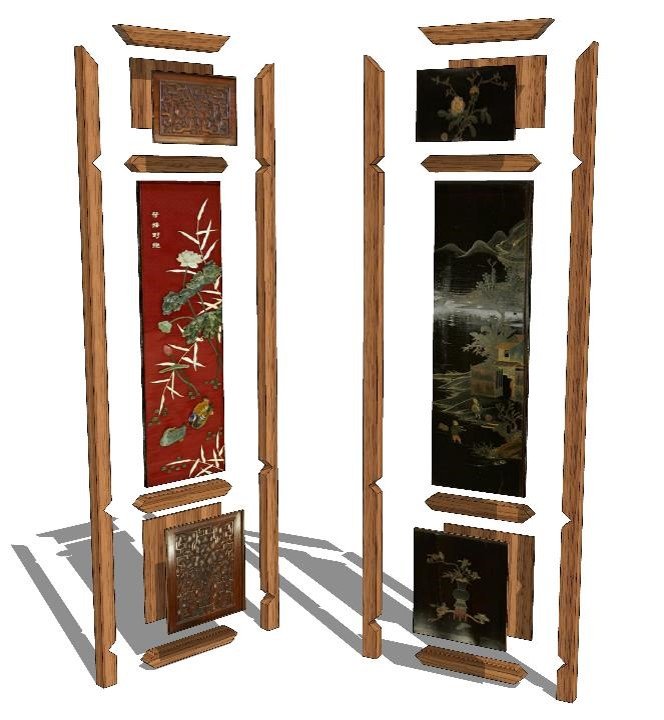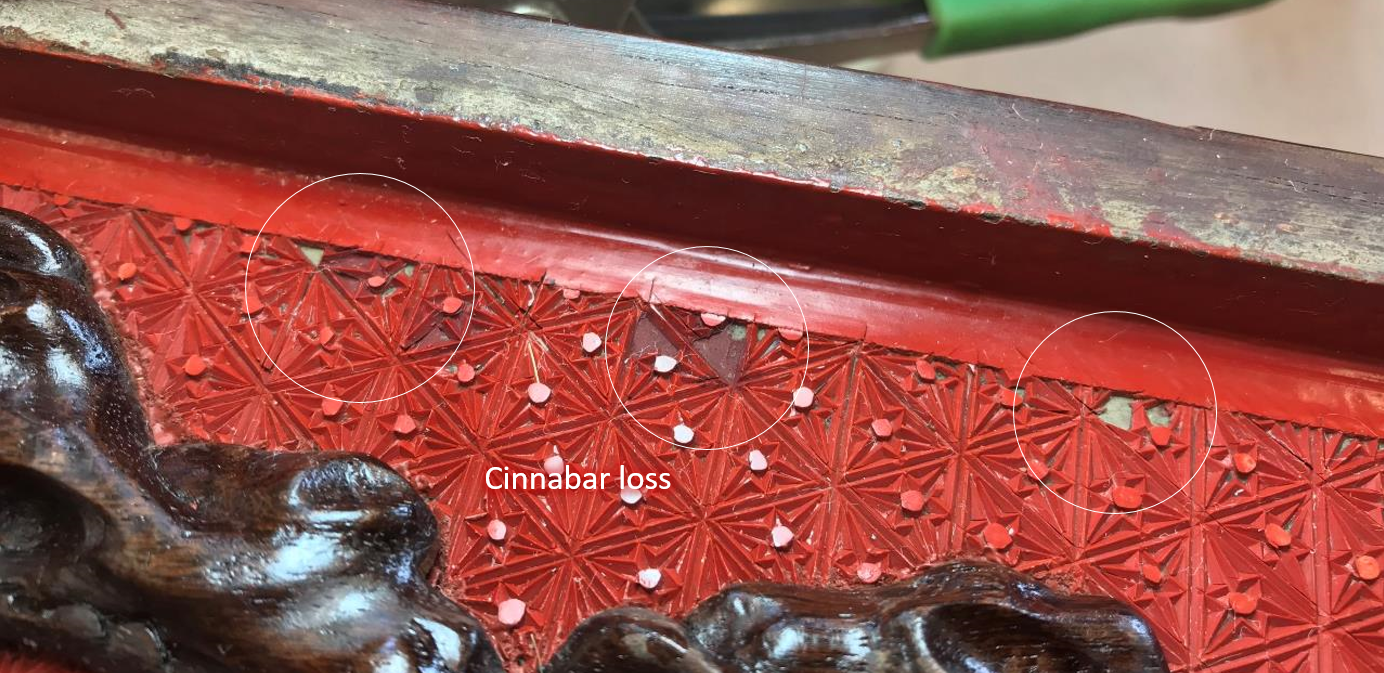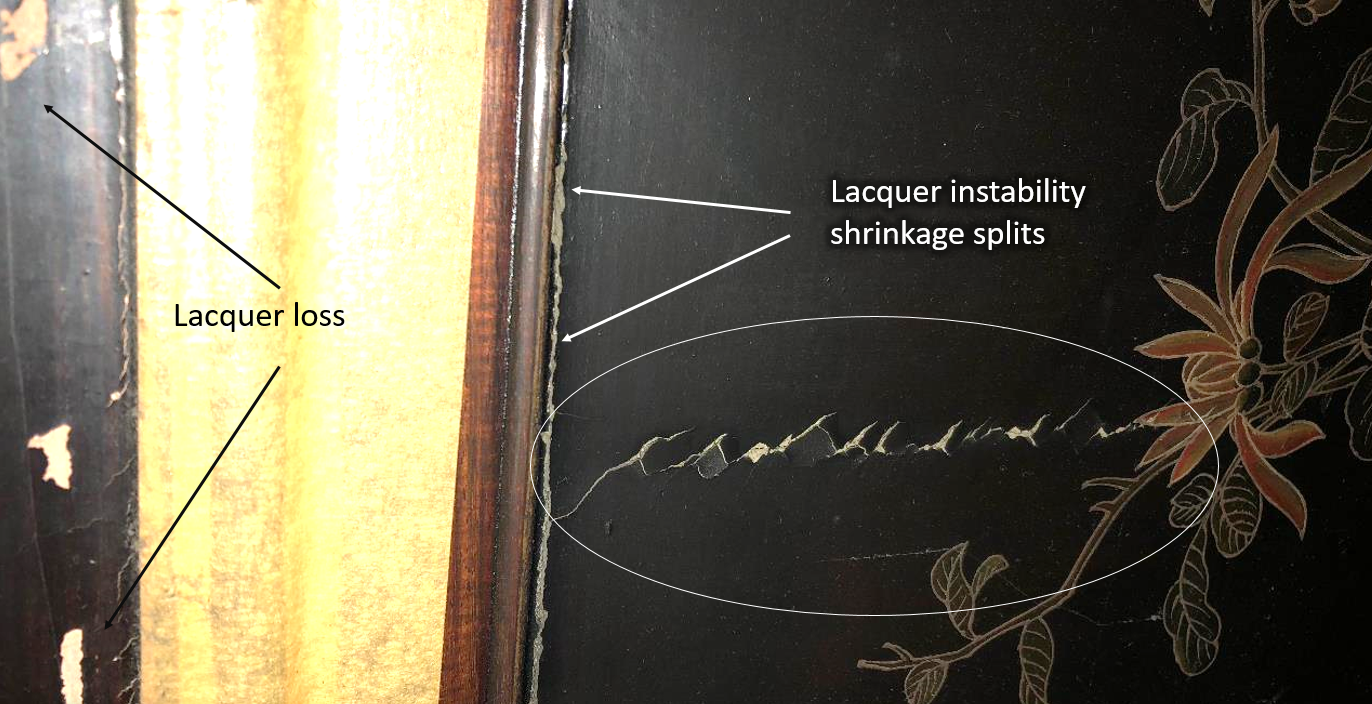The Imperial Screen of Emperor Qianlong during treatment.
Our Furniture Department is thrilled to have performed a complex, multi-step treatment of a Chinese masterpiece. The Imperial Screen was produced as a gift in 1791 during the reign of Emperor Qianlong (1711 - 1799), the fourth emperor of the Qing dynasty who had one of the longest reigns in Chinese history, lasting just over 60 years from 1735 to 1796. The screen came to the United States for display during the 1939 Worlds Fair; The Golden Gate International Exposition in San Francisco. It is now a prized part of the Lizzadro Museum of Lapidary Art in Oak Brook, Illinois.
Emperor Qianlong
Postcard from the 1939 World’s Fair in San Francisco
Prior to treatment, only one side of the screen was on display; however, it was being reinstalled in a new location that would allow for viewing of both sides. Each panel was carefully examined on both sides by The Center’s team of conservators. The screen is comprised of ten sections with a rosewood frame which contain cinnabar lacquer panels with carved stone elements. The rosewood frame has carved panels and ornament in the upper and lower sections. The verso of the screen is black lacquer with gold painted imagery.
Before Treatment
The Cinnabar Lacquer panels of stone and wood carvings had a significant amount of dust, but were in overall good condition. There were only a few areas of lifting or failing lacquer.
Before Treatment
The Black Lacquered panels have gold painting. Each of the center panels had been framed with masking tape, linen tape and blue tape. The tape had been applied to address separations of the rosewood frame. Most of the joints of the rosewood frame had separated and appear to be failing. The frame has significant warping, causing the framed panels to become loose and to no longer be held in place properly by the wooden pin system.
Open joinery
Shrinkage split
Panel shrinkage, noticeable around the interior edge
Exploded view of the panel construction
The mitered tenons used throughout the construction of the frames are a dry fit without glue. “We were constantly impressed with the level of craftsmanship in every element of the screen,” shared Steve Ryan, Senior Conservator of Furniture.
Example of the frame joinery: through tenon spearhead miter
The treatment's complexity was due to the different textures and materials used in the design of the screen and the methods of construction. Wood, lacquer, and a number of precious and semi-precious stones all needed to be addressed during this treatment. There were scattered areas of laquer loss on both sides of the panels.
The Furniture Conservators began by stabilizing and cleaning the screen. Steve and Rob shared how pleased they were with the results of the cleaning, and the vibrancy of colors.
Detail of the cinnabar lacquer during cleaning
Missing elements were recreated by creating castings of carvings still present.
Making molds of a wooden element of the screen
This video showcases the processes used during the conservation of the screen, including castings, replacing missing stones, repairing and resetting the frames, and inpainting areas of loss in the lacquers.
“It was a pleasure and an honor to have been able to work on the treatment of object of this caliber. I was quite honestly in awe at many points of the treatment at the level of artistry exhibited in every detail throughout the piece. From the lapidary techniques, to the lacquer carving , down to the flawless joinery of the frame.”
After treatment
After treatment
Image courtesy Lizzadro Museum of Lapidary Art
Once treatment was complete, the imperial Screen went on display at the Lizzadro Museum of Lapidary Art where both sides can be viewed and appreciated.
Want to learn more? Saturday, February 5th at 10:30am at the Lizzadro Museum is hosting “Hidden Meanings, Rhymes & Wordplay, Part 2” taking an in depth look into the back of the Imperial Screen with Dr. Richard Pegg. Click here to learn more.
Sources:
https://www.britannica.com/biography/Qianlong
https://lizzadromuseum.org/


















